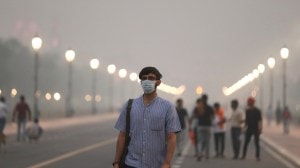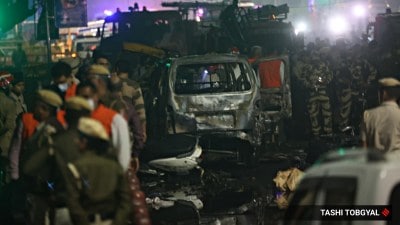A DAY after US President Donald Trump announced a 25 per cent tariff on Indian goods from August 1, with an additional but unspecified “penalty” for its defence and energy imports from Russia, Union Commerce and Industry Minister Piyush Goyal said on Thursday that while the government was “examining the implications”, it would take “all necessary steps to safeguard and promote national interest”.
In a suo motu statement in both Houses of Parliament, Goyal said the government is engaging with all stakeholders, including exporters and industry bodies, for their feedback.

“The implications of the recent development are being examined by the government… The Ministry of Commerce and Industry is engaging with all stakeholders, including exporters and industry, for taking feedback of their assessment of the situation. The government attaches the utmost importance to protecting and promoting the welfare of our farmers, workers, entrepreneurs, exporters, MSMEs and all sections of industry. We will take all necessary steps to safeguard and promote our national interest,” Goyal said in Lok Sabha soon after the House reassembled at 4 pm. He later made a similar statement in Rajya Sabha too.
Story continues below this ad
Goyal’s remarks are significant as India has been resisting giving duty concessions to the US on agriculture and dairy sectors — a key US demand in the trade talks with India.
The two countries are negotiating a bilateral trade agreement (BTA) since March with an aim to more than double the bilateral trade in goods and services to US$ 500 billion by 2030 from the current US$ 191 billion. Several rounds of talks have been completed; the US team is visiting India for the next round of negotiations from August 25.
Giving details of the negotiations, Goyal said: “India and the US entered into negotiations for a fair, balanced and mutually beneficial bilateral trade agreement (BTA) in March 2025 with a target to complete the first tranche of the agreement by Fall of 2025. The two sides finalised the detailed Terms of Reference (ToR) to enter into negotiations of the BTA on March 29, 2025, during the first physical round of discussions held at New Delhi.”
“Thereafter, four physical rounds of negotiations have taken place between both sides, in New Delhi and Washington DC, to work towards finalisation of the BTA in accordance with the agreed ToR. In addition, there have been many virtual meetings between the two sides,” he said.
Story continues below this ad
Giving the chronology of the negotiations, Goyal said: “On April 2, 2025, the US President had issued an executive order on reciprocal tariffs imposing additional duties ranging from 10% to 50% on imports from its trading partners. A baseline duty of 10% has been effective from April 5, 2025. The additional duty on India was announced at 26%, including baseline tariff of 10%. Originally, the full country-specific additional duty was to be effective from April 9, 2025, but was postponed initially for 90 days on April 10, 2025, and further extended up to August 1, 2025.”
“In an increasingly protectionist world, India has done mutually beneficial trade agreements with the UAE, UK, Australia and EFTA (European Free Trade Association comprising Switzerland, Iceland, Norway and Liechtenstein). We are also committed to similar trade agreements with other countries,” Goyal said.
“We are consistently working for the welfare of the farmers and Indian agriculture, to promote prosperity and ensure food security. The government is confident that we will continue our fast-paced journey of inclusive growth and sustainable development towards the goal of Viksit Bharat 2047,” he said.
The minister also said that India has rapidly transformed from being one of the “Fragile 5” to the fastest growing major economy in the world in just over a decade.
Story continues below this ad
“We have risen from the 11th largest economy to one of the top 5 economies, driven by our reforms, hard work of our farmers, MSMEs and entrepreneurs. It is also widely expected that we will become the third largest economy in a few years. Today, international institutions and economists see India as the bright spot in the global economy. India is contributing to almost 16% of global growth,” he said.
“In the last decade, the government has taken transformative measures to promote India as the manufacturing hub of the world, driven by the Make in India initiative. India’s young, skilled and talented workforce is driving innovation and competitiveness of Indian industry. Our exports have steadily increased during the last 11 years,” he said.









